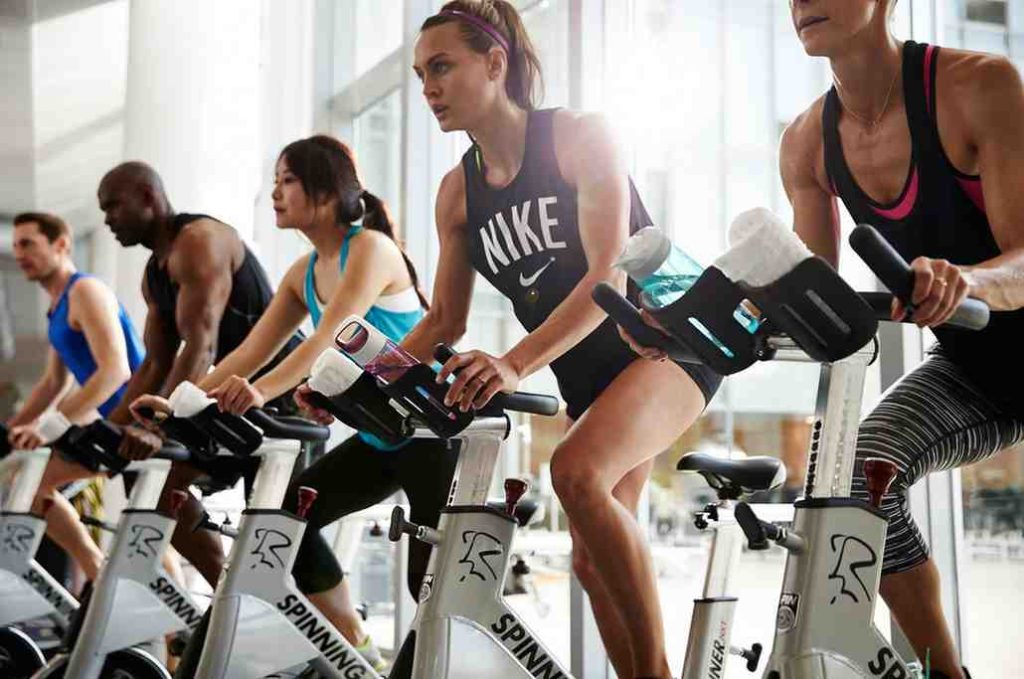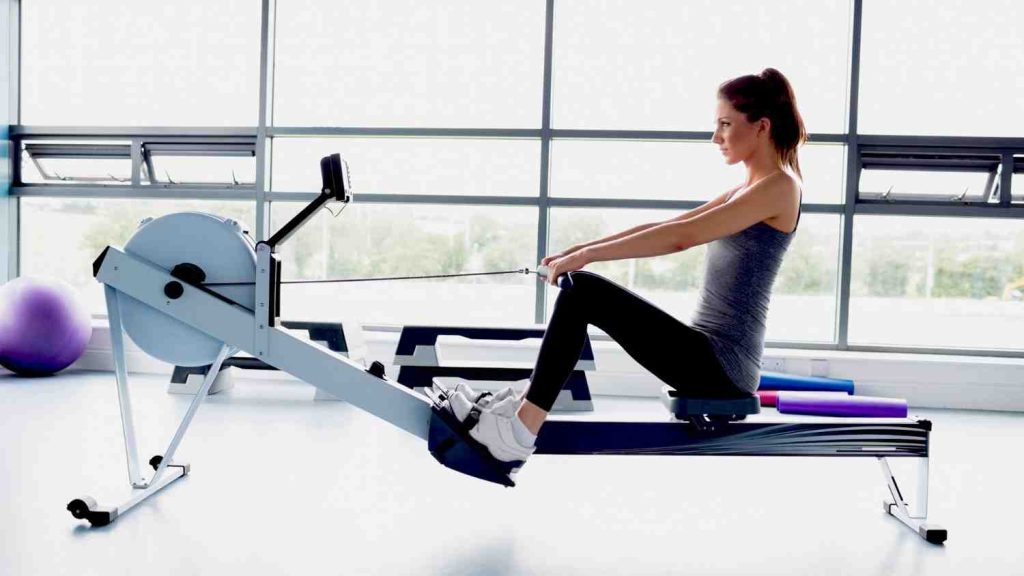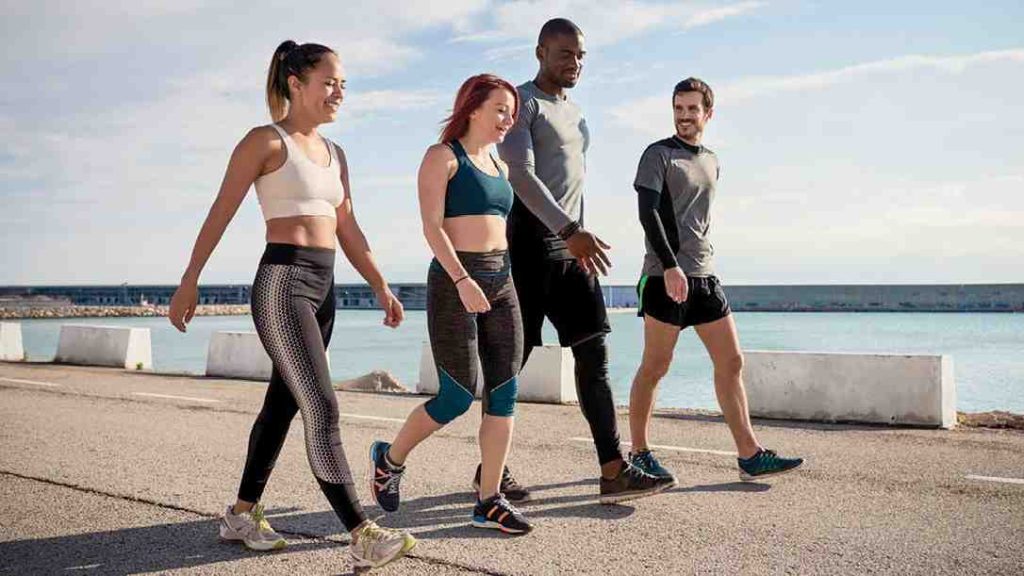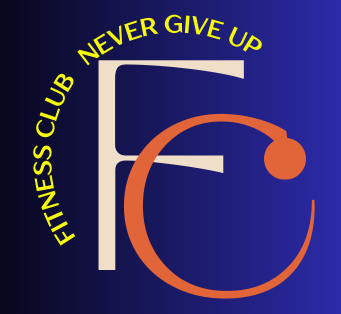Cardiovascular exercising or “cardio,” is exercising in an attempt to increase your heart rate and stay healthy. Cardio is just a basic exercise in order to stay active, fit, and maintain a healthy lifestyle. Many individuals have different goals for performing cardio workouts, but the main overall goal for many is to lose weight.
The reason is, that cardio is the main way to lose fat as you are burning calories, which in turn burns fat off your body through sweat. Yes, cardio is huge for anyone seeking to lose weight fast, but the problem is that many individuals don’t know how to do it right or what to even do.
Therefore I decided to give you an idea of what your cardio workouts should look like if your goal is to lose a large amount of fat as fast as you can. Before we get into how to do it, let’s look at some exercises you should be doing, so you have a clear vision of what cardio is.
Cardio, short for cardiovascular exercise, refers to any physical activity that increases your heart rate and respiration rate over an extended period of time. It is also known as aerobic exercise because it primarily relies on the aerobic energy system, which uses oxygen to produce energy for sustained activity.
Cardio exercises are designed to improve cardiovascular fitness, strengthen the heart and lungs, and enhance overall endurance. They offer a wide range of benefits for physical health, mental well-being, and weight management.
Here is a sample fat-burning cardio workout that you can try:
Fat Burning Cardio List-
(1) Running or Jogging
Both running and jogging are effective forms of cardio exercise that can contribute to fat burning. The main difference between running and jogging lies in the intensity and speed at which they are performed.
Running generally involves a faster pace and higher intensity compared to jogging. It typically involves a longer stride length and a faster tempo. Running tends to increase your heart rate more quickly and can be more demanding on your muscles and cardiovascular system. This higher intensity can lead to a greater calorie burn during the workout and potentially greater fat burning.

Jogging, on the other hand, is characterized by a slower pace and lower intensity compared to running. It is often seen as a more leisurely form of exercise. While jogging may not burn calories as quickly as running, it still provides cardiovascular benefits and can contribute to fat burning, especially when done for longer durations.
The choice between running and jogging depends on your fitness level, preferences, and goals. If you are a beginner or have joint issues, starting with jogging might be more appropriate as it places less stress on the body. As you build up your fitness and endurance, you can gradually increase the intensity and incorporate running intervals into your routine.
Ultimately, the key to fat burning is creating a calorie deficit, which can be achieved through a combination of diet and exercise. Incorporating either running or jogging into your fitness routine, along with a balanced diet, can help you achieve your fat-loss goals.
(2) Cycling
Cycling is another excellent form of cardio exercise that can effectively contribute to fat burning. It offers several advantages for those looking to burn calories and lose fat.
Firstly, cycling is a low-impact exercise, which means it puts less stress on your joints compared to activities like running. This makes it a great option for individuals with joint issues or those who prefer a lower-impact workout.
Secondly, cycling is a versatile activity that can be adapted to various fitness levels and goals. You can adjust the intensity by changing gears, increasing or decreasing resistance, or choosing different terrains. This flexibility allows you to customize your workouts to match your fitness level and gradually increase the intensity as you progress.
Cycling is also an efficient calorie-burning activity. The number of calories burned during cycling depends on factors such as your weight, intensity, duration, and terrain. On average, you can expect to burn around 400-600 calories per hour of moderate-intensity cycling. Intense cycling sessions or uphill cycling can burn even more calories.

Moreover, cycling engages large muscle groups in your legs, such as the quadriceps, hamstrings, and glutes. Working these muscles during cycling helps build strength and endurance, contributing to overall fat loss.
To maximize fat burning during cycling, consider incorporating interval training into your routine. Alternate between periods of higher intensity (e.g., pedaling faster or tackling uphill sections) and recovery periods of lower intensity. This interval training approach can boost your metabolism and increase calorie expenditure both during and after the workout.
Remember that fat loss is influenced by a combination of factors, including diet, exercise, and overall lifestyle. To achieve significant fat-burning results, it’s essential to maintain a calorie deficit by consuming a balanced, healthy diet while incorporating regular cycling sessions into your routine.
(3) Jumping Rope
Jumping rope is an excellent form of cardio exercise that can effectively contribute to fat burning. It is a high-intensity activity that engages multiple muscle groups and increases heart rate, making it an efficient calorie-burning workout.

Jumping rope offers several advantages for fat loss:
High-calorie burn:
Jumping rope is a full-body workout that involves both upper and lower body movements. It increases your heart rate and can burn a significant number of calories in a relatively short amount of time. On average, you can burn around 600-1000 calories per hour of jumping rope, depending on factors such as your weight, intensity, and duration.
Full-body engagement:
Jumping rope engages various muscle groups, including the legs, core, arms, and shoulders. This full-body engagement not only burns calories during the workout but also contributes to muscle development. Building muscle mass can help increase your basal metabolic rate, which means you’ll burn more calories even at rest.
High-intensity interval training (HIIT):
Jumping rope naturally lends itself to interval training. You can alternate between periods of high-intensity jumping and short recovery periods. HIIT has been shown to be an effective method for burning fat and improving cardiovascular fitness. It elevates your heart rate and keeps your body in a fat-burning mode even after you finish the workout.
Portability and accessibility:
Jumping rope requires minimal equipment, and you can do it almost anywhere. Whether you’re at home, in a park, or at the gym, all you need is a rope and enough space to jump. This accessibility makes it a convenient option for incorporating regular cardio workouts into your routine.
To maximize fat burning with jumping rope, consider the following tips:
- Start with shorter sessions if you’re a beginner and gradually increase the duration as your fitness improves.
- Incorporate interval training by alternating between higher-intensity and lower-intensity jumping.
- Maintain proper form and technique to avoid injury and optimize calorie burn.
- Combine jumping rope with a balanced diet to create a calorie deficit and support fat loss.
Remember that fat loss is a holistic process that involves a combination of diet, exercise, and lifestyle choices. Jumping rope can be a valuable addition to your fat-burning regimen, but it’s important to maintain overall consistency and follow a well-rounded approach to achieve your goals.
(4) High-Intensity Interval Training
High-Intensity Interval Training (HIIT) is a highly effective form of cardio exercise for fat burning. It involves short bursts of intense exercise followed by periods of active recovery or rest. HIIT workouts can be adapted to various forms of exercise, such as running, cycling, jumping rope, or bodyweight exercises.

Here are some reasons why HIIT is beneficial for fat burning:
Increased calorie burn:
HIIT workouts are intense and demand a significant amount of energy. They elevate your heart rate and metabolism during the workout and even after it’s finished. This means you continue to burn calories at a higher rate for hours post-workout. The combination of intense effort and active recovery creates an “after-burn effect” known as excess post-exercise oxygen consumption (EPOC).
Time-efficient:
HIIT workouts are typically shorter in duration compared to steady-state cardio exercises. You can achieve significant cardiovascular and fat-burning benefits in a shorter amount of time. HIIT sessions usually range from 10 to 30 minutes, making them ideal for individuals with busy schedules.
Preserves muscle mass:
One concern with cardio exercises is the potential loss of muscle mass. Traditional steady-state cardio workouts can lead to muscle breakdown, especially when done for prolonged periods. HIIT, on the other hand, helps preserve muscle mass due to its shorter duration and the inclusion of intense bursts of exercise. This is beneficial for overall body composition and maintaining a higher metabolic rate.
Improved cardiovascular fitness:
HIIT workouts challenge your cardiovascular system by pushing it to its maximum capacity. Over time, this type of training can enhance your aerobic and anaerobic fitness levels, allowing you to perform better during other physical activities.
When performing HIIT, keep the following considerations in mind:
- Warm up properly before starting the high-intensity intervals to prevent injuries.
- Choose exercises that you enjoy and can perform in good form.
- Tailor the intensity and duration of the intervals to your fitness level. Gradually increase the difficulty as your fitness improves.
- Allow adequate recovery between HIIT sessions to avoid overtraining and give your body time to adapt and recover.
Remember that while HIIT is an effective fat-burning strategy, it should be combined with a well-rounded fitness routine that includes strength training, flexibility exercises, and a balanced diet for optimal results.
(5) Stair Climbing
Stair climbing is a highly effective form of cardio exercise that can contribute to fat-burning and overall fitness. It offers numerous benefits for cardiovascular health and muscular endurance, making it a great choice for those looking to burn calories and lose fat.

Here are some reasons why stair climbing is beneficial for fat burning:
High-calorie burn:
Stair climbing is a demanding activity that engages multiple muscle groups, including your legs, glutes, and core. It requires a significant amount of energy and can burn a substantial number of calories. The exact calorie burn depends on factors like your body weight, intensity, and duration of the workout. On average, you can burn around 500-700 calories per hour of stair climbing.
Increased intensity:
Climbing stairs is a weight-bearing exercise that places a higher demand on your muscles and cardiovascular system compared to exercises like walking or jogging on a flat surface. The vertical movement against gravity requires more effort, resulting in an elevated heart rate and increased calorie expenditure.
Muscle development:
Stair climbing engages major muscle groups in your lower body, including your quadriceps, hamstrings, calves, and glutes. This repeated contraction of these muscles during stair climbing helps build strength and endurance. Building muscle mass contributes to an increased metabolic rate, allowing you to burn more calories even at rest.
Versatility and accessibility:
Stair climbing can be done indoors on stair machines or outdoors on actual stairs, such as in a stadium or a tall building. This versatility makes it accessible to a wide range of individuals, regardless of their fitness level or location. You can also vary the intensity by increasing the speed, taking two steps at a time, or adding weighted vests or backpacks.
To maximize fat burning during stair climbing:
- Start with a warm-up to prepare your body for the workout and prevent injuries.
- Gradually increase the intensity and duration of your stair climbing sessions as your fitness level improves.
- Consider incorporating interval training by alternating between higher intensity, faster-paced climbs, and slower recovery climbs.
- Maintain proper form and technique, keeping your posture upright and engaging your leg and core muscles.
- Combine stair climbing with a well-balanced diet to create a calorie deficit and support fat loss.
Remember that consistency is key to achieving fat loss goals. Incorporating regular stair climbing sessions into your fitness routine, along with other forms of exercise and a healthy diet, can help you burn calories, improve cardiovascular fitness, and contribute to overall fat burning.
(6) Hiking
Hiking is a fantastic cardio exercise that combines physical activity with the beauty of nature. Here’s some information about hiking and its benefits:
Description: Hiking involves walking on trails or paths in natural environments such as forests, mountains, or national parks. It can range from easy, leisurely walks to more challenging uphill climbs and rugged terrains.

Benefits of Hiking:
Cardiovascular Fitness:
Hiking is a great aerobic exercise that gets your heart pumping and improves cardiovascular endurance. It strengthens your heart, lungs, and blood vessels, reducing the risk of heart disease and improving overall fitness.
Muscle Strength and Endurance:
Hiking engages various muscle groups, including your legs, glutes, core, and upper body (when using trekking poles). Uphill climbs and uneven terrains provide resistance, helping to build strength and endurance over time.
Joint Health and Bone Density:
Hiking is a low-impact exercise that puts less stress on your joints compared to high-impact activities like running. It can help improve joint mobility, strengthen the supporting muscles, and promote healthy bones.
Mental Well-being:
Being in nature and enjoying the outdoors have numerous mental health benefits. Hiking allows you to de-stress, reduce anxiety, and improve your mood. It provides an opportunity for solitude, reflection, and a break from the demands of daily life.
Weight Management:
Hiking is an effective way to burn calories and support weight loss or maintenance. The intensity and duration of your hike determine the number of calories burned, but even a moderate-paced hike can contribute to your overall energy expenditure.
Nature Appreciation:
Hiking allows you to explore and connect with the natural world. You can enjoy breathtaking views, observe wildlife, and discover new landscapes while engaging in physical activity.
Tips for a Safe and Enjoyable Hike:
- Plan your hike: Research the trail difficulty, length, and elevation gain. Carry a map or use a GPS device to navigate.
- Wear appropriate gear: Choose comfortable, moisture-wicking clothing, sturdy hiking boots, and carry essentials like sunscreen, a hat, sunglasses, insect repellent, and a first-aid kit.
- Stay hydrated: Bring an adequate amount of water and stay hydrated throughout your hike. Consider carrying a water filter or purification tablets for longer hikes.
- Start gradually: If you’re new to hiking or have a lower fitness level, begin with easier trails and gradually increase the difficulty and distance.
- Be mindful of your surroundings: Follow trail markers, be aware of potential hazards, and respect wildlife and their habitats. Leave no trace by packing out your trash and minimizing your impact on the environment.
Remember to listen to your body, take breaks as needed, and hike within your abilities. Enjoy the journey, take in the scenery, and make hiking a regular part of your fitness routine.
(7) Elliptical Training
Elliptical training is another popular form of cardio exercise that can be effective for burning fat and improving cardiovascular fitness. The elliptical machine provides a low-impact workout that simulates movements similar to running, walking, and stair climbing. Here are some key points to consider when incorporating elliptical training into your fitness routine:

Cardiovascular Benefits: Elliptical training offers a great cardiovascular workout, elevating your heart rate and increasing your breathing rate. This helps improve your cardiovascular endurance, strengthen your heart, and enhance overall cardiovascular health.
Low-Impact Exercise: One of the advantages of using an elliptical machine is its low-impact nature. The elliptical’s smooth gliding motion reduces the stress on your joints, making it a suitable option for individuals with joint issues or those who want to minimize the impact on their knees, hips, or ankles.
Whole-Body Workout: The elliptical machine engages both your upper and lower body, providing a full-body workout. As you pedal, you can also utilize the handles to engage your arm, shoulder, and back muscles. To maximize calorie burn, consider incorporating both arm and leg movements.
Adjustability: Most elliptical machines allow you to adjust the resistance level and incline, providing options to increase the intensity of your workout. By increasing the resistance or adjusting the incline, you can challenge your muscles more and increase the calorie burn.
Interval Training:
Like many other cardio exercises, elliptical training can be made more effective by incorporating interval training. Alternating between periods of high intensity and lower intensity or recovery periods can help boost your metabolism and burn more calories during and after the workout.
Duration and Frequency:
Aim for at least 20-30 minutes of elliptical training per session to achieve significant cardiovascular benefits. Depending on your fitness level, gradually increase the duration or intensity of your workouts. For optimal results, try to engage in elliptical training 3-5 times per week.
Proper Form:
Maintain proper form while using the elliptical machine. Stand tall with a slight forward lean, engage your core muscles, and keep a fluid and controlled motion. Avoid slouching or relying too much on the handles for support.
Variety:
To prevent boredom and maintain motivation, vary your elliptical workouts. Explore different programs or settings on the machine, change the resistance and incline, or incorporate intervals and challenges to keep your workouts interesting and challenging.
Remember to consult with a healthcare professional or fitness instructor before starting any new exercise program, especially if you have any pre-existing health conditions or concerns. They can provide personalized guidance and help tailor an elliptical training program to suit your specific needs and goals.
(8) Rowing
Rowing is an excellent form of cardio exercise that engages multiple muscle groups and provides a full-body workout. It offers numerous benefits, including cardiovascular fitness improvement, muscle strengthening, calorie burning, and low-impact nature. Here’s what you need to know about rowing:

Cardiovascular Fitness:
Rowing is a highly effective aerobic exercise that elevates your heart rate and increases your breathing rate. It challenges your cardiovascular system, improving your heart and lung capacity, and enhancing overall endurance.
Muscle Engagement:
Rowing engages a wide range of muscles in your body. The primary muscles worked during rowing include the legs (quadriceps, hamstrings, and calves), core muscles (abdominals and lower back), upper back, shoulders, and arms. It provides a comprehensive full-body workout that helps strengthen and tone various muscle groups simultaneously.
Low-Impact Exercise:
Rowing is a low-impact exercise, which means it puts minimal stress on your joints compared to activities like running or jumping. The sliding seat and smooth gliding motion of the rowing machine reduce the impact on your knees, hips, and ankles, making it a suitable option for individuals with joint issues or those who want to protect their joints while exercising.
Calorie Burning:
Rowing is a calorie-burning activity that can contribute to weight loss and fat burning. The number of calories burned during rowing depends on factors like your weight, intensity of rowing, and duration of the workout. It is considered a high-intensity exercise that can help you achieve a calorie deficit and promote fat loss.
Proper Technique:
To get the most out of rowing and prevent injuries, it’s crucial to learn and maintain proper rowing techniques. The technique involves a coordinated sequence of movements, including the drive and recovery phases. During the drive phase, you push with your legs, engage your core, and pull with your arms. During the recovery phase, you extend your arms, hinge forward at the hips, and then slide back to the starting position. It’s recommended to take lessons or consult with a rowing coach to ensure you learn and practice the correct form.
Workout Intensity and Duration:
Rowing can be tailored to different fitness levels and goals. You can adjust the resistance level on the rowing machine to make the workout more challenging. Rowing workouts can vary in intensity and duration, ranging from shorter, high-intensity interval sessions to longer endurance-based workouts. Beginners may start with 10-15 minutes of rowing and gradually increase both intensity and duration over time.
Variations and Cross-Training:
To keep your rowing workouts interesting, you can incorporate variations such as sprints, intervals, or steady-state rowing. Additionally, cross-training with other forms of exercise like strength training, cycling, or swimming can complement your rowing routine and provide additional benefits for overall fitness.
As with any new exercise program, it’s advisable to consult with a healthcare professional or fitness instructor, especially if you have any pre-existing health conditions or concerns. They can guide you on proper technique, help you set realistic goals, and design a rowing program that aligns with your fitness level and objectives.
(9) Kickboxing
Kickboxing cardio is a high-intensity workout that combines elements of martial arts and traditional boxing with aerobic exercises. It offers an effective way to burn calories, improve cardiovascular fitness, and engage multiple muscle groups. Here’s what you should know about kickboxing cardio:

Cardiovascular Fitness:
Kickboxing cardio involves continuous movement, incorporating punches, kicks, knee strikes, and footwork. This dynamic and fast-paced workout elevates your heart rate, increases oxygen consumption, and challenges your cardiovascular system. Regular kickboxing cardio sessions can improve your endurance, stamina, and overall cardiovascular fitness.
Full-Body Workout:
Kickboxing cardio engages your entire body, making it a comprehensive workout that targets various muscle groups simultaneously. Punching and kicking movements work your upper body, including the arms, shoulders, chest, and back. Kicking movements also engage your lower body, activating your leg muscles, glutes, and core. The constant movement and transitions between different techniques provide a full-body workout experience.
Calorie Burning:
Kickboxing cardio is a high-energy activity that can burn a significant number of calories. The intensity of the workout, coupled with the combination of aerobic exercises and strength-based movements, can contribute to weight loss and fat burning. The exact number of calories burned will depend on factors like your weight, the intensity of the workout, and the duration of the session.
Core Strength and Stability:
Kickboxing cardio involves a considerable amount of core engagement. Your core muscles play a vital role in maintaining balance, and stability, and generating power in your punches and kicks. Through the rotational movements and stability challenges in kickboxing, you can improve core strength, stability, and overall functional fitness.
Coordination and Agility:
Kickboxing cardio requires coordination between upper and lower body movements, as well as quick reflexes and agility. Regular practice can enhance your coordination skills, body awareness, and reaction time. The combination of punches, kicks, and footwork sequences can help improve your overall motor skills.
Stress Relief and Confidence Building:
Kickboxing cardio not only offers physical benefits but also serves as a great stress-relieving activity. The intense workout allows you to release energy and tension, providing a mental and emotional outlet. Additionally, learning and mastering new techniques can boost self-confidence and self-esteem.
Safety and Technique:
It’s important to prioritize safety and technique when practicing kickboxing cardio. Start with proper warm-up exercises to prepare your body for the workout. Focus on maintaining proper form and technique to minimize the risk of injury. If you’re new to kickboxing, consider taking classes or working with a qualified instructor who can guide you on proper technique and ensure you’re performing the movements correctly.
Modifications and Progressions:
Kickboxing cardio workouts can be modified to suit different fitness levels. Beginners can start with basic punches, kicks, and footwork, gradually increasing intensity and complexity over time. As you progress, you can incorporate faster combinations, add resistance, or even incorporate equipment like punching bags or focus mitts to intensify the workout.
Remember to listen to your body, stay hydrated, and take breaks as needed during your kickboxing cardio sessions. It’s always recommended to consult with a healthcare professional before starting any new exercise program, especially if you have any pre-existing health conditions or concerns. They can provide personalized advice and help tailor a kickboxing cardio routine that aligns with your fitness level and goals.
(10) Swimming
Swimming is an excellent form of cardio exercise that provides a full-body workout while being low-impact on the joints. It offers a range of benefits for cardiovascular fitness, muscle strength, and overall health.

Here’s why swimming is considered a great cardio workout:
Full-body engagement:
Swimming engages multiple muscle groups simultaneously, including your arms, shoulders, core, back, and legs. The resistance of the water provides constant resistance, making your muscles work harder and promoting muscular strength and endurance.
Cardiovascular fitness:
Swimming is a highly effective aerobic exercise that increases your heart rate and improves cardiovascular endurance. As you swim, your heart and lungs work to deliver oxygen to the muscles, enhancing their efficiency and stamina over time.
Low-impact on joints:
The buoyancy of water reduces the impact on your joints, making swimming an ideal cardio option for individuals with joint issues, injuries, or conditions like arthritis. It provides a challenging workout without placing excessive stress on your joints.
Improved lung capacity:
Swimming requires controlled breathing techniques, which help increase lung capacity and strengthen respiratory muscles. It can be particularly beneficial for individuals with asthma or other respiratory conditions.
Increased calorie burn:
Swimming is a calorie-burning exercise that can aid in weight loss or weight management. The intensity and duration of your swimming session, along with your weight and fitness level, determine the number of calories burned. It is estimated that swimming can burn around 400-700 calories per hour, depending on the stroke and effort exerted.
Enhanced flexibility and posture:
Swimming involves stretching and extending your muscles throughout each stroke, promoting flexibility and range of motion. It can also help improve posture and balance by strengthening the muscles that support your spine and core.
Reduced stress and improved mental well-being:
Like other forms of exercise, swimming releases endorphins, which are natural mood-boosting chemicals in the brain. Swimming can help reduce stress, improve mental clarity, and promote a sense of relaxation and well-being.
To make the most of swimming as a cardio exercise, consider incorporating different strokes, such as freestyle, backstroke, breaststroke, and butterfly, to target different muscle groups and add variety to your workouts. Varying the intensity and duration of your swimming sessions can also help challenge your cardiovascular system and promote progress.
Remember to warm up with some gentle stretching before swimming and gradually increase the intensity and duration of your workouts. If you’re new to swimming or have any health concerns, it’s advisable to seek guidance from a swimming instructor or healthcare professional to ensure proper technique and safety in the water.
Swimming can be an enjoyable and refreshing way to improve your cardiovascular fitness, build strength, and support your overall well-being.
(11) Power walking or speed walking
Power walking, also known as speed walking or brisk walking, is a popular form of cardio exercise that involves walking at a faster pace than normal walking. It provides numerous health benefits and is suitable for people of various fitness levels.

Here’s an overview of power walking and its benefits:
Technique:
Power walking involves maintaining an upright posture, swinging your arms in coordination with your leg movements, and taking longer strides compared to regular walking. The heel-to-toe rolling motion should be smooth and purposeful.
Cardiovascular Fitness:
Power walking elevates your heart rate, increasing the workload on your cardiovascular system. This helps improve cardiovascular endurance, strengthen the heart, and enhance the efficiency of your lungs.
Calorie Burn:
Power walking can burn a significant number of calories, making it an effective exercise for weight management and burning body fat. The exact calorie burn depends on factors such as your weight, intensity, duration, and terrain.
Low-Impact:
Unlike some high-impact exercises, power walking is a low-impact activity that puts less stress on your joints, making it suitable for individuals with joint issues or those looking for a gentler cardio option.
Muscle Engagement:
While power walking primarily targets the muscles in your lower body, including the calves, quadriceps, hamstrings, glutes, and hip flexors, it also engages the muscles in your core and arms. Swinging your arms during power walking helps increase the intensity and calorie burn.
Bone Health:
Weight-bearing exercises like power walking can contribute to better bone density and reduce the risk of osteoporosis. The impact of walking stimulates bone remodeling and strengthening.
Accessibility and Convenience:
Power walking can be performed almost anywhere and requires minimal equipment. It can be done outdoors in parks, on trails, or in urban areas. Additionally, it can be adapted to different fitness levels and gradually increased in intensity as your fitness improves.
Mental Well-being:
Power walking, like any form of exercise, releases endorphins, which can enhance mood, reduce stress, and improve mental clarity. It can also provide an opportunity for relaxation, solitude, or social interaction depending on your preferences.
To make the most of your power walking routine, consider the following tips:
- Warm up with a few minutes of gentle walking before picking up the pace.
- Start with a comfortable pace and gradually increase your speed over time.
- Maintain good posture, engaging your core muscles and keeping your head up.
- Wear comfortable and supportive footwear to minimize the risk of discomfort or injury.
- Track your progress using a fitness app or wearable device to monitor distance, time, and intensity.
- Consider adding interval training to your power walking routine by alternating between periods of faster-paced walking and slower recovery walking.
Remember to listen to your body, start at a suitable intensity, and gradually progress as your fitness improves. If you have any health concerns or are new to exercise, it’s advisable to consult with a healthcare professional before starting a power walking program.
Conclusion
Cardiovascular exercise, commonly known as cardio, is a vital component of a well-rounded fitness routine. It refers to any exercise that increases your heart rate and engages large muscle groups, such as running, cycling, swimming, or brisk walking. After considering the available research and scientific consensus.
In conclusion, incorporating regular cardio exercise into your routine offers a wide range of physical and mental health benefits. It contributes to cardiovascular health, weight management, mental well-being, physical endurance, disease prevention, and bone/joint health. It is important to personalize your cardio program based on individual needs and abilities to maximize the positive impact of this type of exercise.

